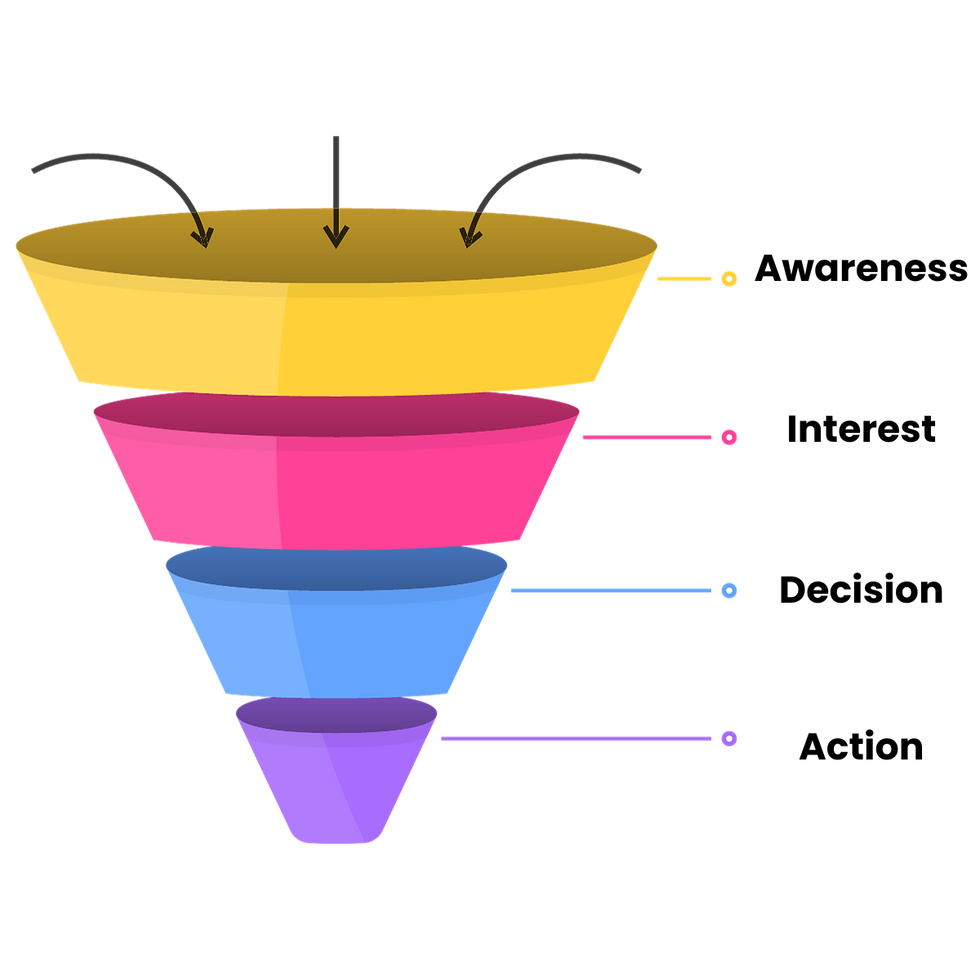How to make decisions on where to focus effort as a SME
- Nicky Finlay

- Nov 8, 2023
- 3 min read
Most SMEs have a million and one initiatives and tasks to do.
It is easy to get carried away with tactical ideas and initiatives. It can be harder to take a step back and look at what value the ideas will bring to the business.
But with limited resources and time, being able to prioritise actions based on the impact they have on the business is really important.
A useful way is to start with a top-down view of your business by looking at your sales funnel which represents the stages a potential customer moves through before making a purchase.
Typically, it comprises four main phases:

Awareness: At the top of the funnel, prospects become aware of a product or service.
Interest: They show interest and consider the offering.
Decision: Prospects weigh up the options and intend to purchase.
Action: Finally, they make the purchase.
Harnessing the Power of Metrics
The sales funnel can be a way to unlock where to prioritise and what decisions need to be focussed on.
Using the data in your business from web analysis, call systems and customer databases, you can create performance metrics to aid in the decision-making process.
By developing key metrics within each stage you can identify where growth can come from:
Traffic and Leads (Awareness Stage): Metrics like website traffic, click-through rates, and the number of leads generated provide insights into how many people are entering the funnel. Analysing these metrics helps in optimising marketing efforts to attract more potential customers.
Engagement (Interest Stage): Metrics such as time spent on the website, content engagement, and email open rates indicate the level of interest and interaction of potential customers with the offering. Understanding these metrics aids in tailoring content to maintain interest and engagement.
Conversion Rate (Decision Stage): This crucial metric reflects the percentage of leads that convert into customers. Tracking this helps identify barriers in the decision-making process and fine-tune strategies to increase conversions.
Retention and Referrals (Action Stage): Metrics like customer retention rate and referrals showcase the satisfaction of customers. Retaining existing customers and turning them into advocates is essential for sustaining growth.
Making Informed Decisions
Once you have a baseline of where you are as a business you can start to determine where the opportunities are to improve and grow:
Identify strengths and weaknesses at each stage, where you can implement targeted improvements. Building simple scenario models can help start to quantify the initiatives. E.g. what would turnover be based on increasing basket size for 10% of your customers?
Identify the strategy needed to achieve it, for example, promotional incentives, complementary or product alternatives, or focussing on a new target audience.
Put a testing plan in place to see the impact of the strategies at each stage of the funnel.
This approach will enable you to identify areas of improvement, focus on your objectives, and align your ideas and initiatives to impact.
We often find the first hurdle is defining the layers in the funnel that suit your business, next is to identify and access the data to populate the performance metrics. But the gains of doing this will provide a strong foundation for growth for the future.
Today’s Tip: Build a sales funnel to articulate a clear view of the stages a shopper goes through to become a regular customer.
Get in touch if you need help with creating your sales funnel or building scenario models.




Comments